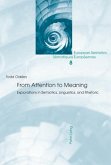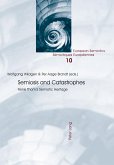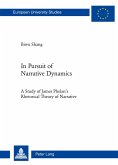This book examines the problem of relationships between culture and space. Highlighting the use of semiotics of culture as a basic concept of research, it describes the power of the cultural landscape in the context of culture philosophical research. Opening with a discussion of the existence of culture in space, it establishes basic concepts such as noosphere and pneumatosphere. The author acknowledges the early contributions of thinkers like Vladimir Vernadsky and Pierre Teilhard de Chardin, who first observed that human activity has become a geological force.
Introducing time and space to the discussion, the author then describes the nature of mythological time, eternity versus timelessness, and the semantics of sacred landscapes, space and ritual. These concepts are further developed in discussions of the metaphorical nature of cultural landscape, and the city as metaphor.
The book explores semiotics in the cultural landscape, examining the genesis of concepts from geographical images to signs and the axiological dimension of geographical images. In her approach to the idea of cultural landscape as text, she provides detailed examples, including the Russian landscape as agent provocateur of the text, and the culture philosophical aspects and semantics of travel.
It establishes the cultural landscape as a phenomenon of culture that is fixed in geographical space with the help of semiotic mechanisms-a specific area of culture of life possessing functional and ontological self-sufficiency.
This book appeals readers and researchers interested in the philosophy of culture, semiotics of space, and the philosophical dimensions of culture and geography.
Introducing time and space to the discussion, the author then describes the nature of mythological time, eternity versus timelessness, and the semantics of sacred landscapes, space and ritual. These concepts are further developed in discussions of the metaphorical nature of cultural landscape, and the city as metaphor.
The book explores semiotics in the cultural landscape, examining the genesis of concepts from geographical images to signs and the axiological dimension of geographical images. In her approach to the idea of cultural landscape as text, she provides detailed examples, including the Russian landscape as agent provocateur of the text, and the culture philosophical aspects and semantics of travel.
It establishes the cultural landscape as a phenomenon of culture that is fixed in geographical space with the help of semiotic mechanisms-a specific area of culture of life possessing functional and ontological self-sufficiency.
This book appeals readers and researchers interested in the philosophy of culture, semiotics of space, and the philosophical dimensions of culture and geography.








